January 26, 2018 / by attila / In news
Light-curve classifications scrutinized by UNIGE astronomers
This is the first guest post on the MMOS blog by University of Geneva researchers. The cover image is from NASA’s JPL project: Visions of the Future Posters.
Light-curve classifications scrutinized by UNIGE astronomers
by François Bouchy, Maxime Marmier and Oliver Turner
In last July 2017, all 176’802 light-curves obtained by CoRoT space-mission were injected into the project-discovery platform of the massively multiplayer online role-playing game (MMORPG) EVE-online with the aim of detecting new transiting exoplanets. At the astronomy department of the Geneva University a first analysis of the 44.4 million classifications provided by 77’709 players is underway. Hundreds of light-curves, previously thought to have no transits, have been identified by the players as new transit candidates with a very high consensus. Though, it is important to note that a high consensus does not mean the events are new planets. So, these new events are presently being analysed in more detail by the astronomers of Geneva University and crosschecked with other astronomical databases.
Much like the galaxy of New Eden, the work of finding planet transits is fraught with difficulty, even for professionals. As such, a high fraction of these new candidates correspond to artefacts in the light-curves due to instrumental effect, intrinsic stellar variability or eclipsing binary stars. However, in spite of this, dozens of the detections checked so far present the typical shape of an exoplanet signature. This goes to show that, though only a fraction of the data supplied have been cross-checked by astronomers so far, EVE-online players are making a remarkable impact on the analysis of the CoRoT light-curves. Their efforts have proved particularly valuable in finding transit-like signals buried in signals caused by stellar variability and individual, non-repeating transit events. The latter are of great interest as they may turn out to be planets in very long period orbits which are currently under-represented and poorly studied.
The following is a small selection of of particularly interesting objects:
A (potential) Jupiter-like planet with a variable host star
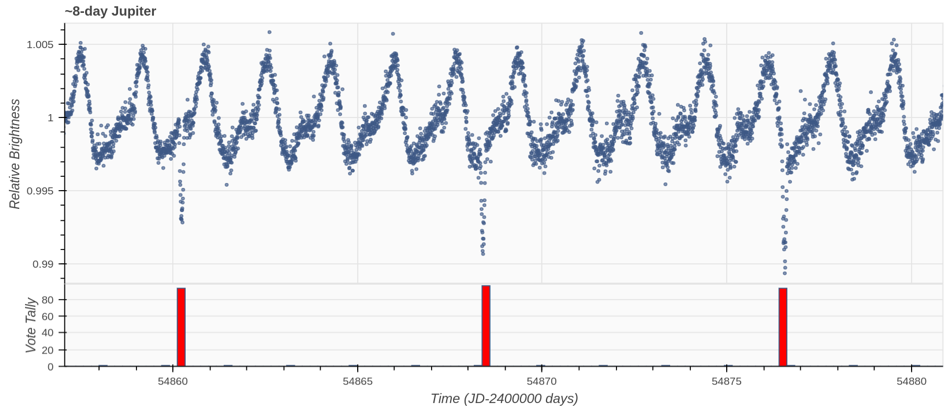
(This time zoomed in.)

A (potential) long-period Jupiter-like planet
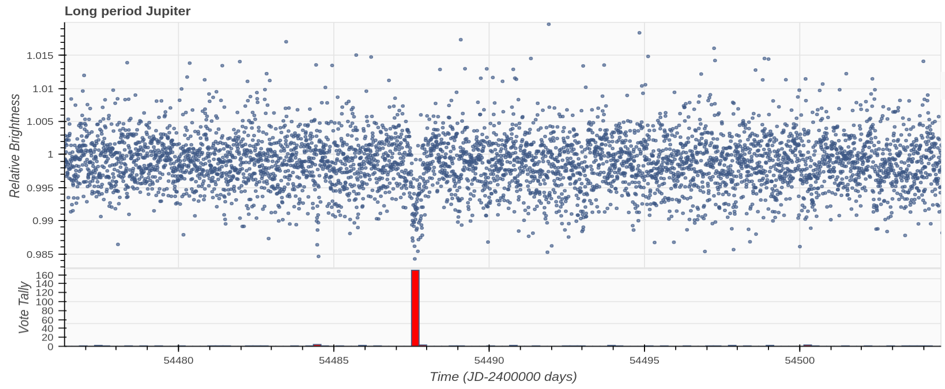
(A close up)
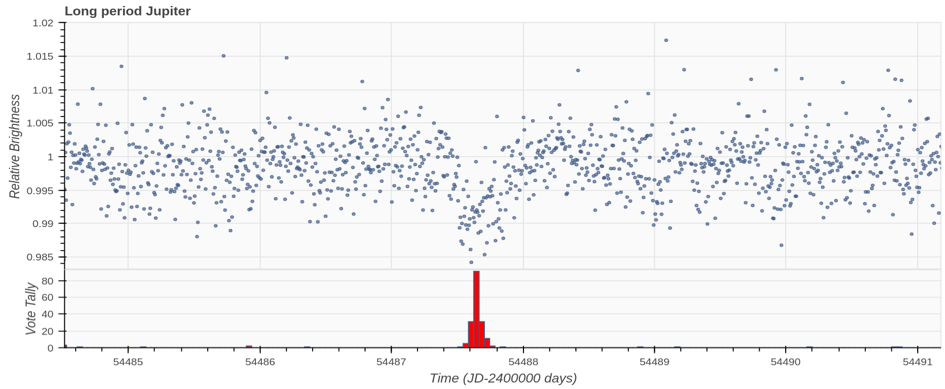
A (potential) Neptune-like planet (from a somewhat noisy lightcurve)
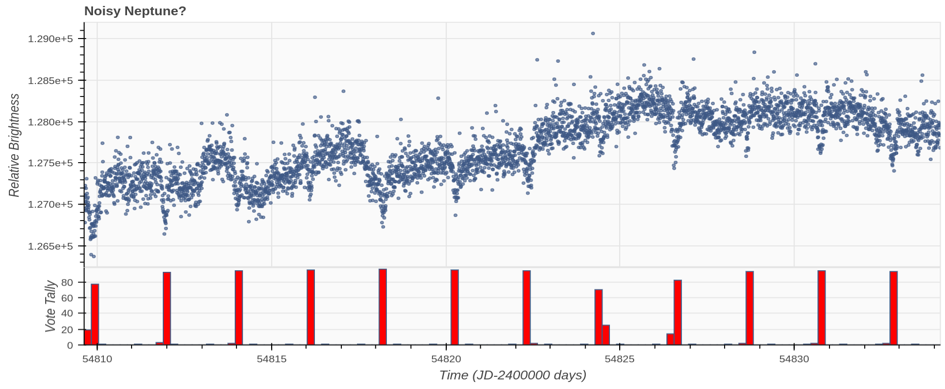
A zoom in on one transit-like event.
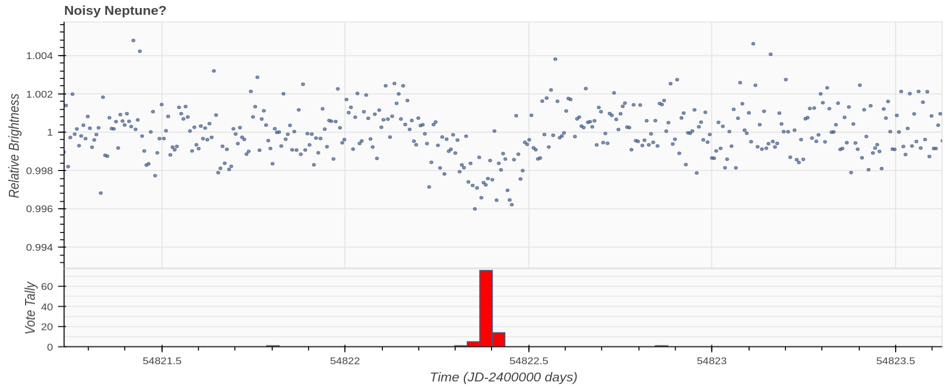
In mid-2018, the TESS (Transiting Exoplanet Survey Satellite) space mission will be launched. In a two-year survey of the solar neighbourhood, TESS will monitor more than 200,000 stars for temporary drops in brightness caused by planetary transits. Regardless of their diverse in-game roles (be they haulers, combatants, spies or the like), the commanders of EVE-online have shown themselves to be effective, real-life explorers of the galaxy.
Visual inspection of lightcurves is an important, often time-consuming step in transit surveys. It is often difficult for computers to find isolated, small events in noisy data. Access to a large number of capable, motivated people is a valuable resource that will lead to the discovery of objects that may otherwise be overlooked. The contribution of EVE online’s player base in this new project will be even more valuable as, instead of searching archival data that has been extensively searched by other means, they will be looking at brand new data. Their involvement will probably help astronomers identify strange new worlds in future space missions like TESS operations.

